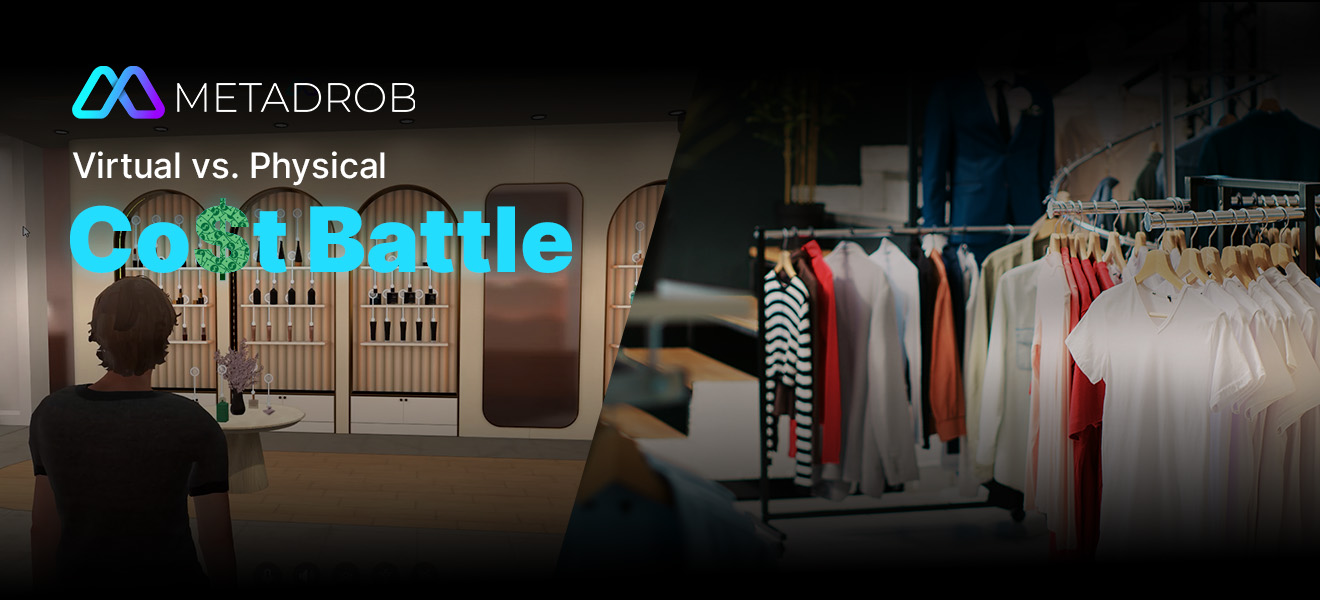The Impact of Immersive Technologies on Reducing Ecommerce Return Rates

For many consumers in the digital age, online shopping has become the norm. However, just as technology develops, so do customer expectations. “A startling 95% of consumers who own internet-connected devices are interested in utilizing virtual reality (VR) for shopping,” says the PYMNTS Intelligence Study. This statistic highlights a growing tendency toward immersive and customized online buying experiences.
By 2024, shoppers want more from their virtual purchasing experiences than just convenience. Customers expect seamless cross-platform integration, customized recommendations based on their interests, and engaging interactions that replicate in-store buying online. In order to survive in the cutthroat digital marketplace, this blog will explore how retailers may both meet and surpass these changing expectations.
Seamless Integration and User Experience
When it comes to online purchasing specifically, customers anticipate a simple and intuitive experience. Integrating the online business with the customers’ favorite platforms and devices is one of the most important things that affects their level of pleasure. In 2024, customers will place a high value on the following crucial elements of seamless integration and user experience:
- Mobile Optimization: Online retailers must be thoroughly optimized for mobile devices due to the increasing use of smartphones. The website will adjust to all screen sizes thanks to a responsive design, guaranteeing a consistent and pleasurable shopping experience on all devices.
- Intuitive Navigation: To effectively guide customers around your online store, a well-defined and arranged navigation structure is crucial. User-friendly product categories and search features facilitate the speedy and effective discovery of what they’re looking for.
- Quick Loading Times: Long loading times can cause bounce rates to rise and negatively affect user satisfaction. Customers want websites to load quickly in order to avoid annoyance and keep them engaged, especially when using mobile devices.
- Consistent User Experience: To create a seamless and unforgettable buying experience, all platforms and devices must have the same look and feel. This involves maintaining the online store’s operation, layout, and branding consistently so that customers are at ease and familiar with it on any device.
Online businesses may develop virtual shopping experiences that surpass customer expectations and foster customer loyalty by giving priority to these components.
Personalized Recommendations and Tailored Offers
Customers want a purchasing experience that seems specifically catered to their tastes in the digital environment we live in. Personalized offers and recommendations are now crucial components of a successful online purchasing experience.
Retailers can use consumer data to design a more tailored shopping experience. Retailers can determine trends and preferences by looking at past purchases, browsing history, and demographic data. Product recommendations that are likely to appeal to specific clients can be made using this data.
One of the most important tools for predicting the wants and needs of customers is predictive analytics. Algorithms can analyze large datasets to help merchants anticipate future trends and adjust their product selections. Because of this, they are able to sell things to customers before they even realize they need them.
Another powerful strategy for engaging clients is targeted marketing. Retailers may boost conversions by sending tailored offers based on customers’ interests and behavior. A store might, for instance, give a discount to a consumer eyeing a product for several weeks.
Last but not least, customized product pages can improve the buying experience. Retailers may enhance the relevance and engagement of the browsing experience by customizing product pages based on the preferences of individual customers. This can involve presenting products that are comparable to those the client has already bought or making tailored suggestions based on their browsing preferences.
Immersive Virtual Shopping Experiences
In this section, learn what are the benefits of a 3D virtual store for customers that they anticipate from retailers like you:
Augmented Reality (AR) and Virtual Reality (VR):
- Enhanced Product Visualization: Augmented reality (AR) projects digital data onto the physical environment, enabling users to view things as they would in their own homes. Virtual reality (VR) produces completely realistic virtual worlds that allow users to interact with objects in three dimensions.
- Personalized Shopping Experiences: By adapting shopping experiences to personal tastes, AR and VR can increase their appeal and enjoyment.
- Reduced Returns: By giving customers a better knowledge of what they’re buying, AR and VR can help reduce returns by presenting a more accurate portrayal of things.
3D Product Visualization:
- Improved Product Understanding: Customers may view products from all perspectives and zoom in on specifics to gain a better grasp of their features and measurements, thanks to 3D product visualization.
- Better Decision-Making: Customers can be more educated and less likely to have buyer regret by using 3D product visualization.
Virtual Try-On:
- Customized Fitting: Customers can virtually test apparel and accessories, eliminating the need for real fitting rooms and ensuring a flawless fit.
- Improved Shopping Experience: Customers who might be reluctant to try on garments in person will find that virtual try-on capabilities make shopping more convenient and satisfying.
Interactive Product Demos:
- Engaging Product Experiences: Dynamic product demos provide consumers with the chance to interact digitally with products, making their purchasing experiences more interesting and educational.
- Knowing the Product In-Depth: Customers who engage with things online are better able to comprehend their features and advantages and make more well-informed purchases.
Secure and Trustworthy Transactions
Customers are now more cautious about data leaks and online fraud. Consequently, the expectation for virtual purchasing experiences has increased to include secure and reliable transactions.
Payment Security:
- Robust Encryption: To protect consumer payment information, online businesses need to use robust encryption technologies. This involves guarding sensitive data against unwanted access by utilizing industry-standard encryption techniques like SSL/TLS.
- Tokenization: By lowering the possibility of data breaches, storing payment information as tokens rather than in plain text can further improve security.
- Periodic Security Audits: To find and fix security flaws in their payment systems, retailers should carry out frequent security audits.
Transparent Return Policies:
- Clear and Simple: Customers should be able to comprehend and obtain return policies with ease. They should outline in detail the terms of returns, the process for processing refunds, and any costs involved.
- Customer-Friendly: Having a return policy that is friendly to customers helps foster trust and promote repeat business. Retailers ought to make an effort to streamline the return procedure as much as they can.
Authentic Product Verification:
- Genuine Items: Upholding client trust requires making sure that things sold online are genuine. Retailers should use quality control procedures and procure goods from reliable vendors.
- Product Certifications: Acknowledging the authenticity of products purchased by customers can be strengthened by offering product certifications or authenticity certificates.
Positive Customer Reviews:
- Positive Customer Reviews: These are a valuable form of social proof that can sway the decisions of prospective customers. Retailers need to invite consumers to post evaluations and feature them prominently on their online platforms.
- Reputation Management: Keeping an eye on and reacting to client testimonials might support the upkeep of a favorable online reputation. It is crucial to respond to any unfavorable comments in a timely and professional manner.
Customer Support and Assistance
The need for effective and accessible customer support will only increase as 2024 approaches.
- 24/7 Customer Care: Providing customers with round-the-clock customer care is one of their core expectations. Customers expect to be able to contact support at any time, whether it’s for a technical issue, a question about a product, or an issue with an order. Numerous channels, including live chat, email, phone, and social media, can be used to do this.
- Live Chat and Virtual Assistants: Another essential component of customer service is instant assistance. Customers can get quick assistance simply and effectively using live chat and virtual assistants. These resources can help with troubleshooting, product recommendations, and basic question-answering.
- Knowledge Base and FAQs: Customer support personnel can work much less when they have a well-organized knowledge base and frequently asked questions (FAQs) section. These technologies enable clients to easily access information and self-help resources, enabling them to handle a variety of problems independently. This enhances the general consumer experience while also freeing up customer care representatives to answer more complicated queries.
Customer service will, therefore, continue to be essential to a positive online purchasing experience as virtual commerce develops. Through round-the-clock accessibility, immediate support, and extensive self-help materials, companies may fulfil the ever-increasing demands of their clientele and establish enduring bonds.
How Can Metadrob Help You Meet Consumers’ Virtual Shopping Expectations
Success in the dynamic world of e-commerce depends on fulfilling customer expectations. Businesses can accomplish this goal with the support of Metadrob’s all-inclusive solution.
With the help of state-of-the-art technology and a thorough comprehension of customer behavior, Metadrob enables merchants to provide individualized experiences, frictionless navigation, and engaging virtual shopping environments.
You can easily negotiate the intricacies of the online market with Metadrob and produce remarkable purchasing experiences that increase client happiness and loyalty. Their incredible virtual store theme is all your business needs to meet consumer expectations.
So, here’s your chance to create virtual showroom with Metadrob today!
Conclusion
As we’ve seen, customers have higher standards for online purchasing in 2024. They expect immersive interactions, tailored recommendations, and seamless experiences. The standard is high, with features like safe transactions, fast loading times, and straightforward navigation alongside AR/VR integration.
With new developments like voice shopping and shoppable social media, the future of online shopping looks bright. Retailers that can successfully use technology and adjust to these changing consumer tastes will not only meet but also surpass customer expectations, securing their place in the cutthroat online economy.
Connect with Metadrob
Ready to take the first step towards unlocking opportunities, realizing goals, and embracing innovation? We're here and eager to connect.

+91 966-004-4020






